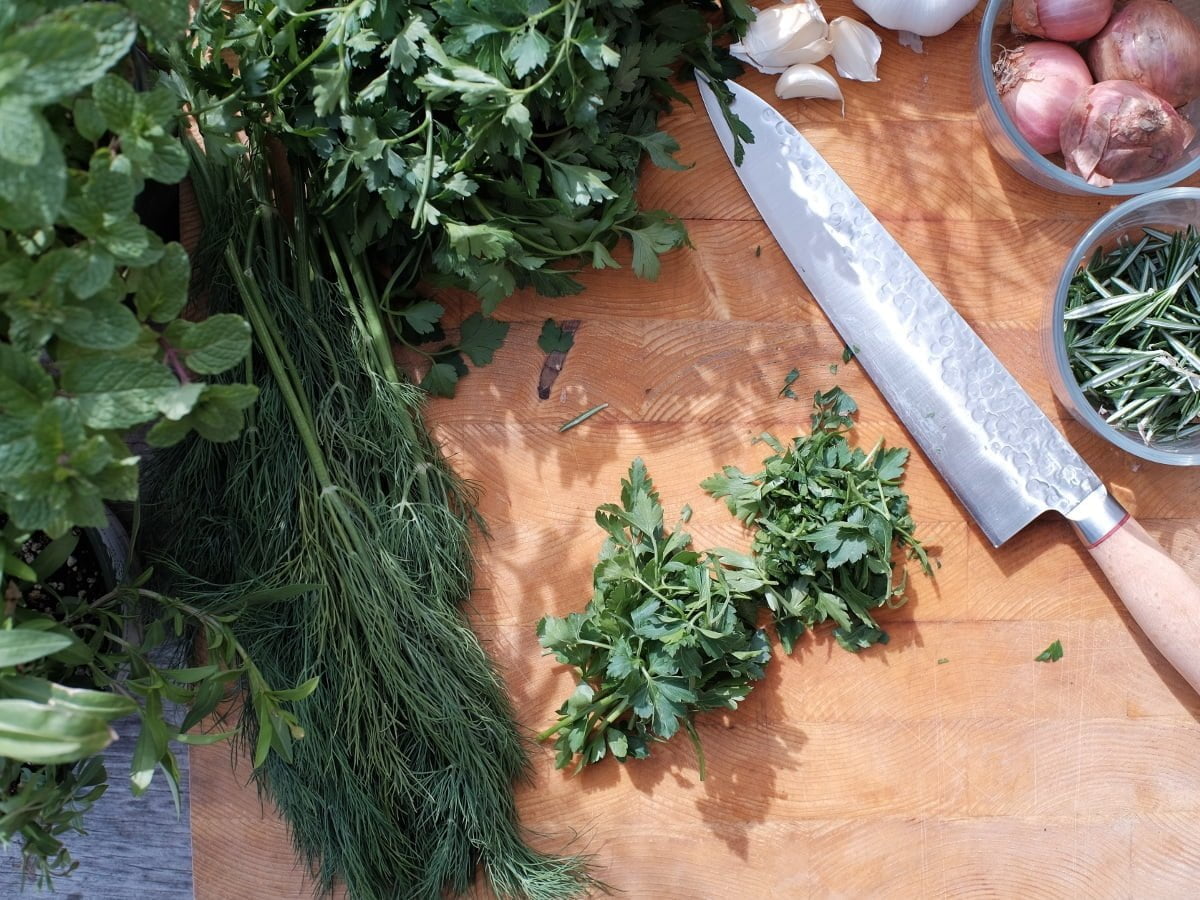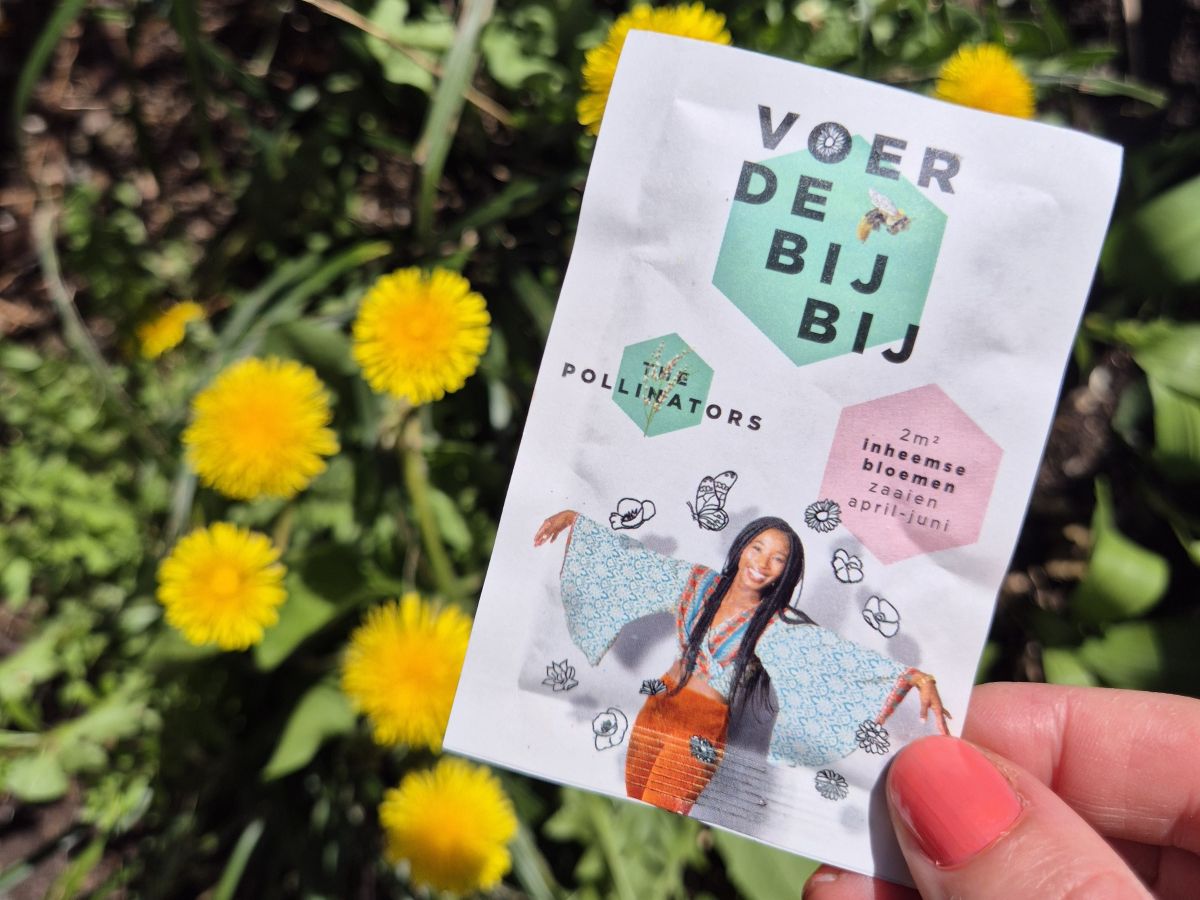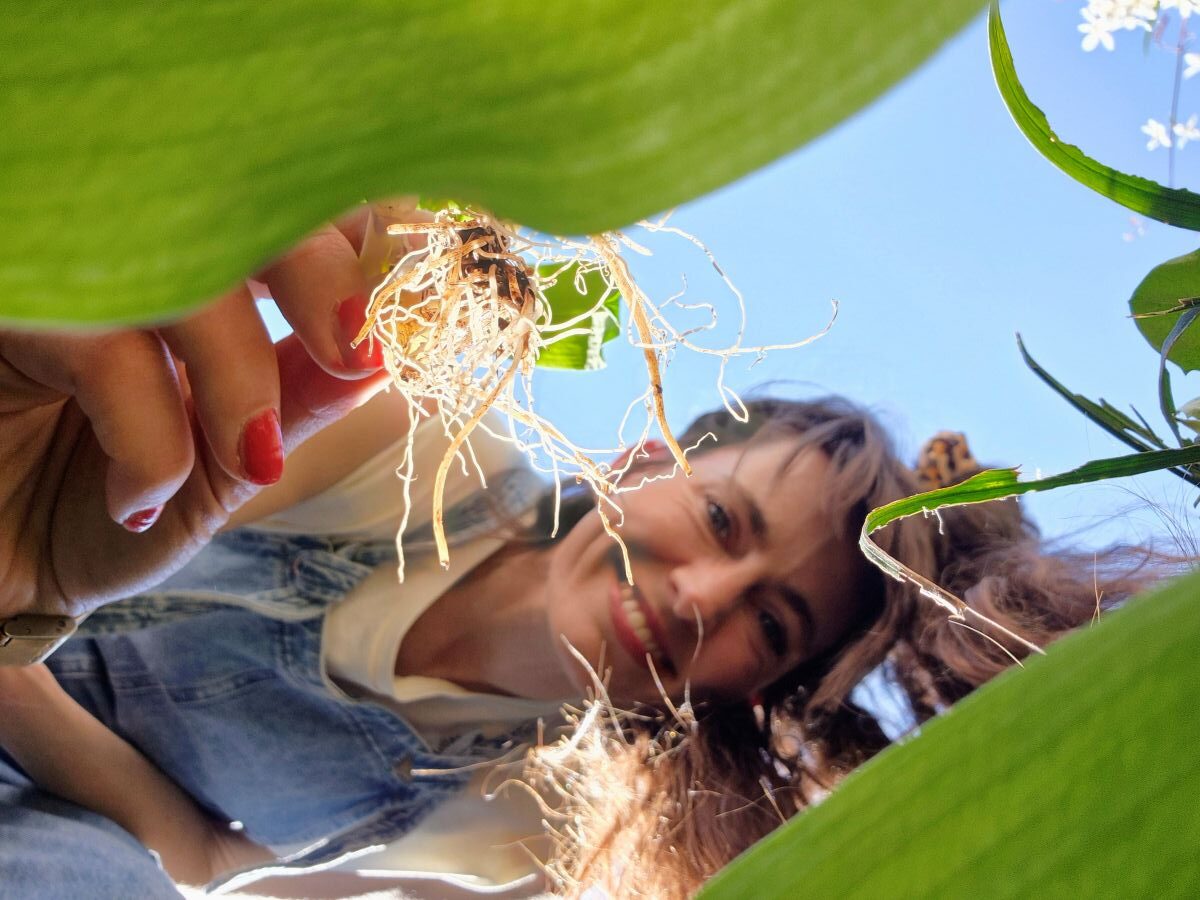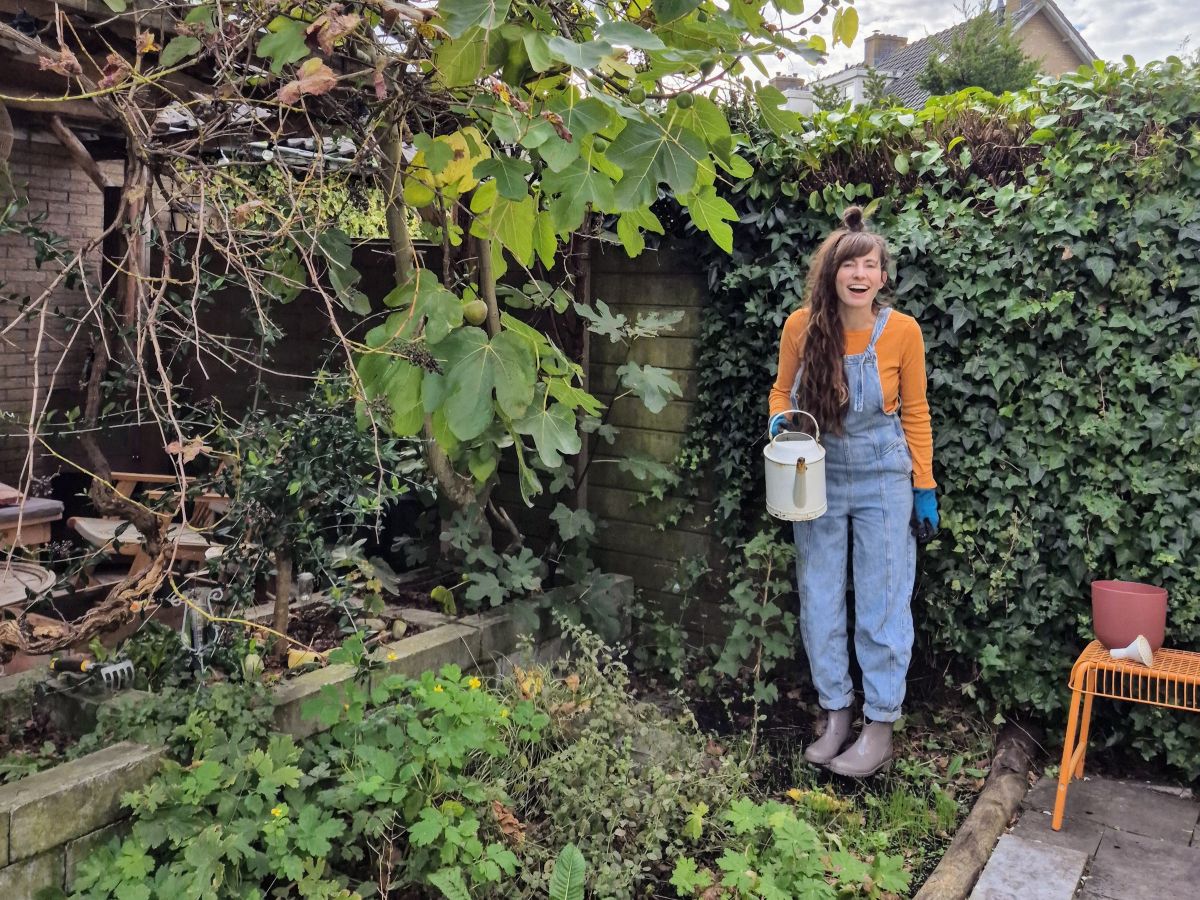While cooking, take a quick walk into the garden: some fresh rosemary in your pasta sauce, chives on your sandwich or mint in your tea or mojito. Romantic, isn't it? But heartbreakingly feasible with your own herb garden! Besides looking nice, organic herbs are also very useful to have in your garden or on your balcony. They are of course useful for yourself, as you can use them plenty in the kitchen, make tea or syrup from them or something more next level, use them as medicine. Also, having an herb garden is very useful for insects. They get nectar and pollen from it. It is best to choose organic herbs. That way, you won't ingest pesticides yourself and neither will the insects in your garden! Garden expert Amanda knows all about creating a dummy-proof herb garden, are you reading?
Organic herbs from your own herb garden
By using herbs from your own garden, your dishes always seem to taste just that little bit better. Sowing and growing herbs yourself is also great fun! However, do you lack confidence in your own green fingers or simply no time? Fortunately, you can also buy organic herb plants. Just make sure you choose organic, pesticide-free ones. Find out why this is so important again in this article on toxic-free garden plants.
This is why your herbal plant from the supermarket is quickly withering away
Almost everyone has bought an herb plant in the supermarket at one time or another. Has this one lasted long? Probably not! Let me explain why. Supermarket plants are grown from seed. Lots of seed to be precise, because that's how the pot looks nice and full when you buy it. As a result, the roots do not have enough room to grow and absorb nutrients. So what they need is more space!
You can give your bought organic herb plant more space by tearing or dividing the plant. This way, you divide the root ball into several pieces. Then give each piece its own pot with organic vegetable garden soil. Then put your organic herb plant in a warm and light place. From mid-May, you can also put the pots outside, or make a nice herb box. I did the latter myself. Or rather, my husband made the container from recycled decking with wheels underneath. Super handy!



Organic herbs on wheels garden: chives, coin and rosemary.
Organic herbs in the open field
You also have evergreen plants that can grow into bushes. These herbal plants again do better in the open ground. So you can just plant them in your garden. Examples are thyme, rosemary and sage. They will then grow on their own and you can always keep harvesting them. Tip for making good use of them: place the herbs near your back door so that you can easily reach them!
The ten best organic herbs to put in your own herb garden
It is great to be able to pick herbs fresh from your own herb garden when you need them. If you choose which herbs you sow or plant a little cleverly, you're going to enjoy them a lot. These ten organic herbs are nice to start with, they are versatile in use and relatively easy to maintain:
1. Chives: delicious in soup, (egg) salads and as a garnish. Chives are a perennial, but not evergreen. You can harvest from March to October. By the way, the flowers are edible, but they also make insects very happy, so do leave something for them? New seeds form in the flowers, so the chives will self-seed.
2. Mint: delicious for making tea, but mint also does well in dishes and sauces. The active ingredient menthol relieves colds, flu and stomach aches. Mint is a proliferator, so it is better to plant it in a large pot or container rather than in full soil. Mint is also a perennial, but not evergreen. You have many varieties of mint: strawberry mint, chocolate mint, pineapple mint, etc.
3. Rosemary: so delicious with potatoes or oven vegetables! The shrub likes to be in a sunny and warm place; in a cold winter you should protect it well. Rosemary is an evergreen shrub, which produces small blue flowers from March to June. Rosemary smells wonderful and always gives me a holiday feeling.
4. Thyme: seasoning for Mediterranean dishes and soups. Also suitable for making your own cough medicine. Thyme is easy to grow yourself from seeds. Thyme retains its leaves in winter and is thus evergreen. It likes sun and drought, so it doesn't matter if you forget to water it once in a while. Thyme blooms with lilac flowers in June and July. Pruning stimulates growth, so regularly cutting a few branches is no problem.
5. Badger garlic: a garlic-flavoured native plant, delicious for making your own pesto. We also made ramson salt, garlic butter and pesto of. Daslook is a great plant to let grow wild in your garden in a spot in semi-shade. It is a woodland plant, so it does well under trees and shrubs. Badger garlic blooms in April and May with small white flowers and is not evergreen. After flowering, you can make capers from the seeds.


Organic herbs from our own garden, such as chamomile, you can easily dry yourself.
6. Chamomile: My favourite tea flavour. Smells great and has a relaxing and calming effect. You can pick and dry the flowers from late May to September, making chamomile tea from your own herb garden! By the way, this recipe with oat milk, chamomile and rose also comes highly recommended. You can sow chamomile directly outdoors in March and April. Chamomile likes sunshine. It is an annual plant, but it leaves enough seeds so that it will come back again the following year. Chamomile attracts many insects, so it's a topper for the garden and native too.
7. Lemon verbena: Vervein tea is made from this and is also used in cakes, syrup and desserts. The leaves have a strong lemon scent when touched, three to five leaves are enough for a cup of tea from your own herb garden! Lemon verbena is also great for making a fresh summer drink. The plant is moderately hardy (down to minus ten) and likes a spot in the semi-shade in your herb garden. The plant does not produce seeds and can only be propagated by cutting or tearing the plant.
8. Fennel: from the seed you make tea against stomach ache or intestinal cramps, or because it is just very tasty if you like the taste of aniseed. Blooms from July to August and attracts many insects such as ladybirds and bees. Fennel likes to be in full sun. Both the flowers and the stems smell delicious. Fennel is a perennial and is very hardy.
9. Lavas: also called Maggi plant, can be used in soups and stews, but is also good for making your own herb butter. It is a great salt-free alternative to Maggi. Stimulates the appetite and calms restless bowels. All plant parts are edible: seed, leaf, stem and root. The leaves can be harvested in summer. Its flowering colour is green/yellow and it blooms from July to August. Lovage is a perennial and very hardy, but not evergreen. Lovage prefers a sunny or semi-shaded spot.
10. Dill: has an aniseed-like flavour and can be used in soups and sauces, e.g. make a Greek tzatziki with herbs from your own herb garden! The seed can be used for pickling cucumbers and gherkins. It is a beautiful plant to see with long, dark-green panicles. Very suitable also for the ornamental garden, as it provides height and airiness in the border. The thin leaves of dill are used as well as the flowers and seeds. Dill is an annual and is easy to grow yourself from seed and requires a spot in semi-shade. It stimulates the appetite and reduces cramps, flatulence and nausea.



Chives and dill are both fine plants for your herb garden. You can also start a small herb garden, for example if you only have a balcony. These organic herbs are from Crisp.
Get started with your own organic herb garden!
Creating an organic herb garden in your own backyard or balcony is a fun way to add fresh and healthy ingredients to your meals. And do you have a cold? Your herb garden offers relief! Moreover, by creating your own organic herb garden, you simultaneously promote biodiversity on your own patch of land. With just a little effort, you can grow your hands full of different types of herbs, so roll up your sleeves and get going with your organic herb garden! Your taste buds and your environment will thank you.
More gardening tips from thegreenlist.nl
- Handy: you can freeze these herbs.
- Fancy delicious organic strawberries from your own garden? Then quickly read the tips for growing strawberries.
- Do you still need potting soil? Then see why you want to buy peat-free potting soil here.
- Save butts and stumps because these vegetables you can regrow.
Photo credits: main image: Kevin Doran (Unsplash), chives, mint, rosemary and chamomile: Amanda Sniekers, wild garlic: Mircea X (Unsplash), dill: Under Ortel (Unsplash), thegreenlist.nl.












